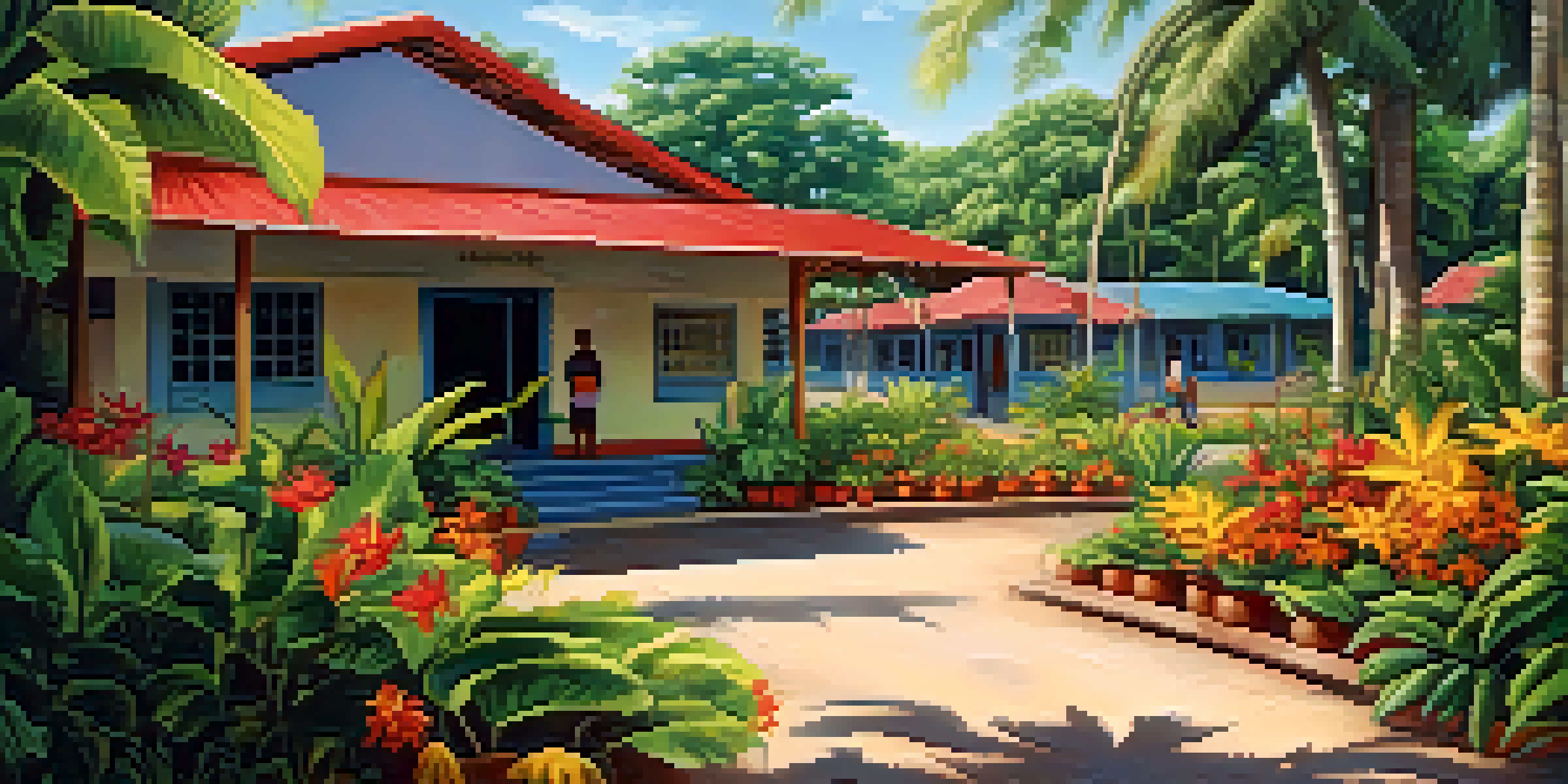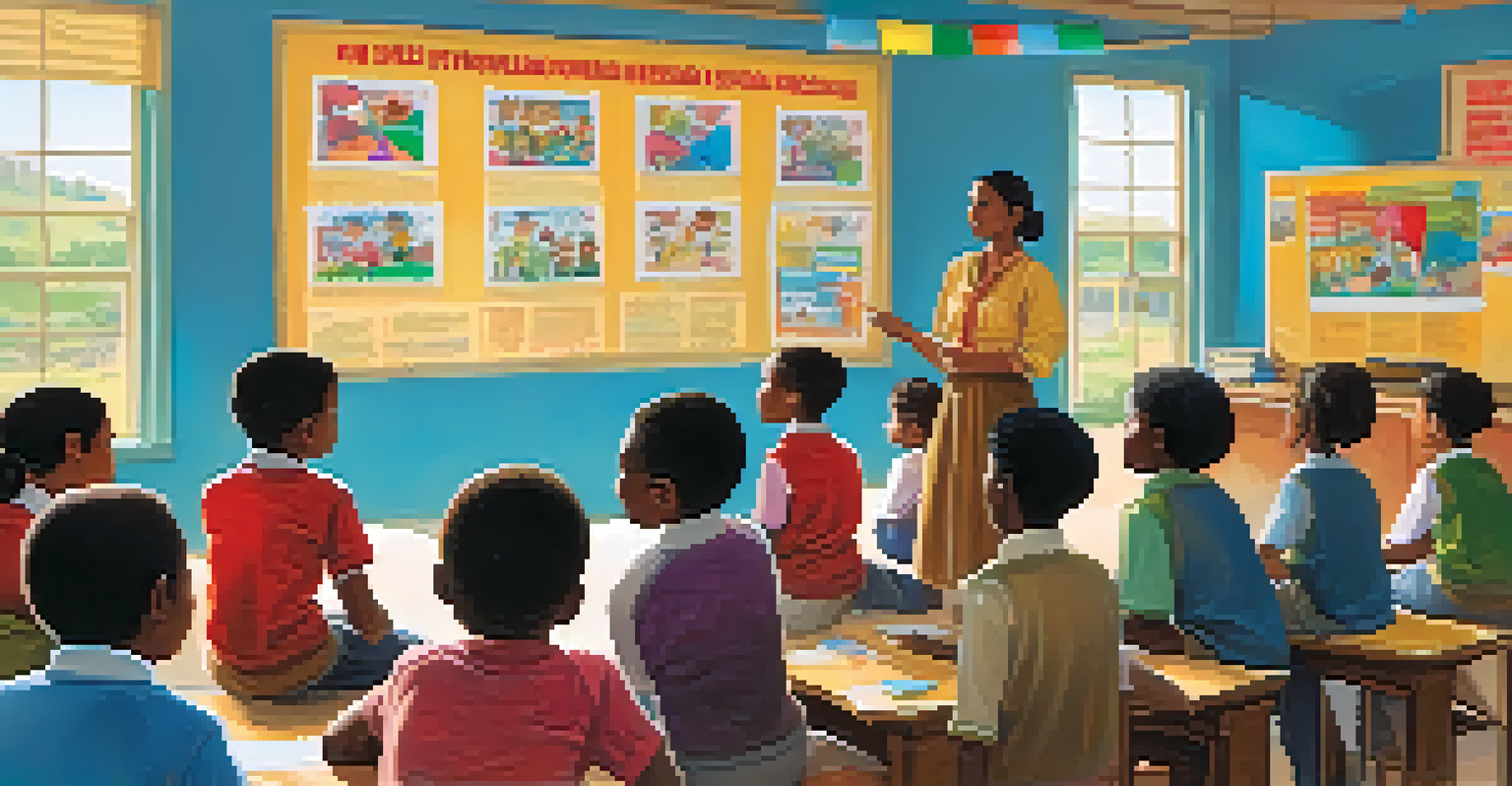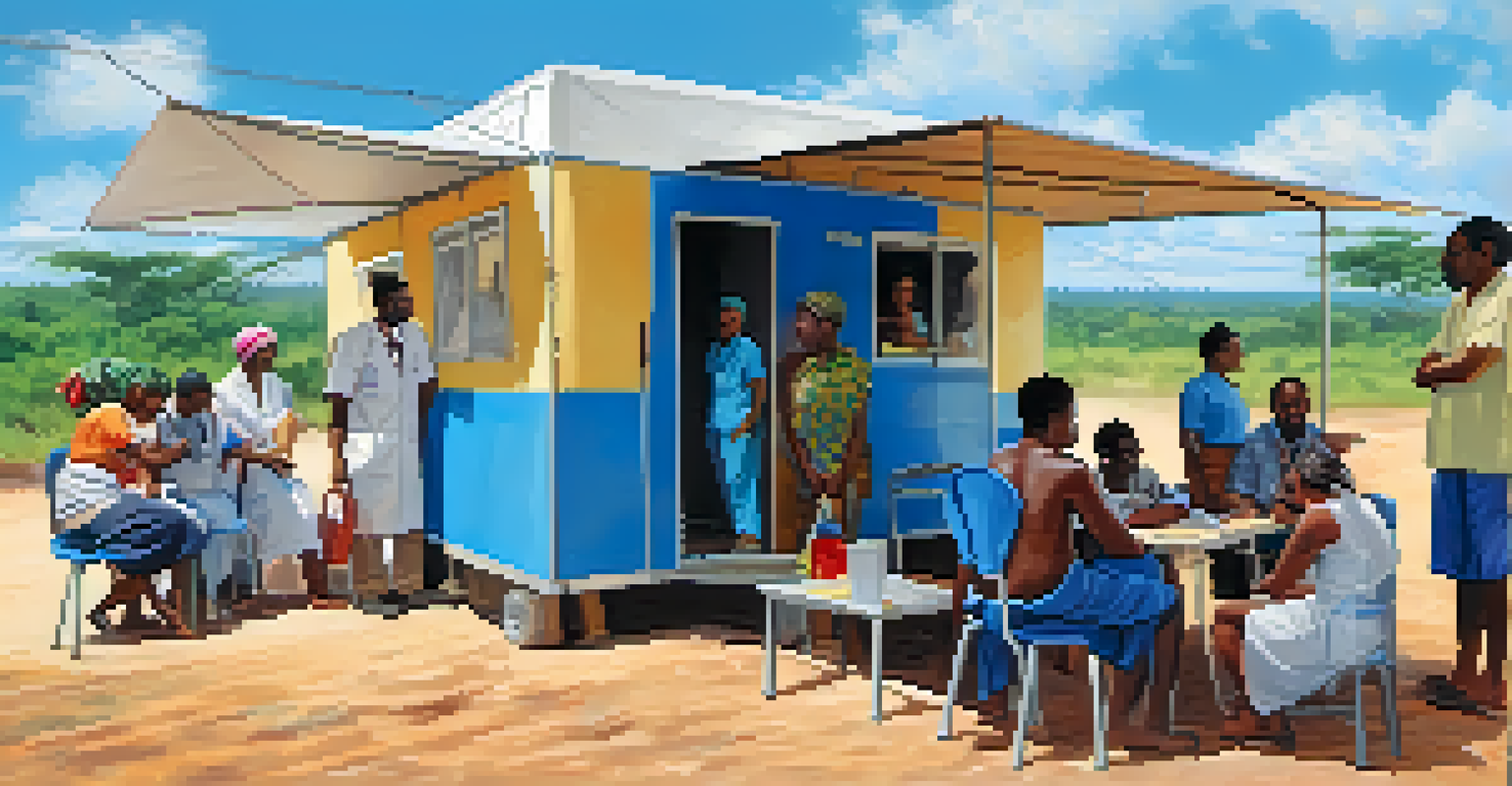HIV/AIDS in Tropical Regions: Challenges and Treatment Access

The Burden of HIV/AIDS in Tropical Regions
HIV/AIDS remains a significant health challenge in tropical regions, where factors like poverty, limited healthcare infrastructure, and cultural stigmas exacerbate the situation. Many countries in Africa, Southeast Asia, and parts of Latin America experience high prevalence rates, making it essential to address both prevention and treatment. The World Health Organization reports that these regions account for a disproportionate number of global HIV cases, highlighting an urgent need for targeted interventions.
The greatest weapon against stress is our ability to choose one thought over another.
The tropical climate itself can also play a role in the spread of HIV, as overlapping health issues like malaria and tuberculosis complicate treatment and prevention efforts. Many individuals living with HIV may also be co-infected with these diseases, which can hinder their access to appropriate care and increase the risk of mortality. Therefore, understanding the unique challenges of these environments is crucial for developing effective strategies.
Community awareness and education are vital components in combating the HIV epidemic in tropical areas. By addressing misinformation and stigma surrounding the disease, local health organizations can foster a more accepting environment where individuals feel empowered to seek testing and treatment. This grassroots approach is essential for creating sustainable change in these communities.
Social and Economic Barriers to Treatment Access
Access to HIV treatment in tropical regions is often hindered by a combination of social and economic barriers. Many individuals face financial constraints that make it difficult to afford medications or healthcare services, particularly in low-income areas where resources are scarce. This situation is compounded by the fact that many people living with HIV are part of marginalized groups, who may already be facing discrimination in other aspects of life.

Transportation also poses a significant challenge in many tropical regions. Rural communities, where the majority of HIV cases occur, often lack adequate healthcare facilities, forcing individuals to travel long distances for treatment. This journey can be daunting, especially for those with limited mobility or financial means, resulting in missed appointments and a lack of consistent care.
HIV/AIDS Challenges in Tropical Regions
Tropical regions face significant health challenges related to HIV/AIDS due to poverty, limited healthcare, and cultural stigmas.
Furthermore, the stigma associated with HIV/AIDS can deter individuals from seeking treatment altogether. Fear of judgment from their communities or even family members may prevent them from accessing necessary healthcare services. This stigma not only affects individual patients but also hampers broader public health efforts aimed at controlling the spread of the virus.
Cultural Factors Influencing HIV Prevention
Cultural beliefs and practices play a significant role in shaping attitudes toward HIV prevention in tropical regions. Traditional perceptions about sexuality, gender roles, and health can impact how individuals view their risk for HIV and their willingness to engage in preventive measures. For example, some cultures may prioritize abstinence as the primary method of prevention, often neglecting the importance of education around safe practices.
Education is the most powerful weapon which you can use to change the world.
Moreover, gender dynamics can influence access to information and resources. In many societies, women may have less power to negotiate safe sex practices or may lack access to reproductive health services. This can lead to higher rates of infection among women, necessitating targeted educational campaigns that empower them to take control of their sexual health.
To effectively address these cultural barriers, health programs must be culturally sensitive and community-driven. Engaging local leaders in dialogues about HIV/AIDS can help shift perceptions and promote healthier behaviors. Tailoring interventions to fit the cultural context ensures that they resonate with the community, fostering a more effective response.
The Role of International Aid and Organizations
International aid plays a crucial role in addressing the HIV/AIDS epidemic in tropical regions. Organizations such as the Global Fund and UNAIDS provide funding, resources, and technical assistance to support local health initiatives. This global collaboration is vital for ensuring that affected countries have the tools they need to combat the virus effectively.
In addition to financial support, these organizations often facilitate training for healthcare workers, ensuring that local providers are well-equipped to deliver quality care. This capacity-building approach not only improves treatment access but also strengthens overall health systems, making them more resilient to future challenges.
Social Barriers to Treatment Access
Social and economic barriers, including stigma and transportation issues, hinder individuals' access to vital HIV treatment in these areas.
However, relying solely on international aid is not a sustainable solution. Long-term success requires that local governments invest in their healthcare systems and prioritize HIV/AIDS as a public health issue. By fostering partnerships between local and international stakeholders, sustainable models of care can be developed, ultimately improving health outcomes.
Innovations in HIV Treatment and Prevention
Innovative approaches to HIV treatment and prevention are emerging, offering hope for those living in tropical regions. Antiretroviral therapy (ART) has transformed the lives of many people with HIV, allowing them to live longer, healthier lives. Newer formulations, such as long-acting injectables, are also being explored, which may improve adherence and reduce the frequency of clinic visits.
In addition to medical advancements, technology is playing a pivotal role in increasing awareness and access to services. Mobile health applications, for instance, can provide individuals with vital information about HIV prevention, testing locations, and treatment options. These tools empower users to take charge of their health while also reducing the stigma associated with seeking care.
Community outreach programs that leverage technology can bridge gaps in treatment access by connecting individuals to resources and support networks. By harnessing the power of innovation, tropical regions can enhance their response to the HIV epidemic, ultimately improving health outcomes for those affected.
The Importance of Education and Awareness Campaigns
Education and awareness campaigns are critical in the fight against HIV/AIDS, particularly in tropical regions where misinformation is prevalent. By providing accurate information about transmission, prevention, and treatment, these campaigns can dispel myths and encourage individuals to seek testing and care. Engaging local community leaders in these efforts can help ensure that messages resonate and reach those most at risk.
Schools and community centers serve as valuable platforms for disseminating information and fostering open discussions about sexual health. By integrating HIV education into school curricula, young people can learn about safe practices early on, equipping them with the knowledge they need to protect themselves. This proactive approach can significantly reduce new infections over time.
Importance of Education and Awareness
Education and awareness campaigns are crucial in dispelling myths about HIV/AIDS and empowering communities to seek testing and treatment.
Additionally, social media and digital platforms can be leveraged to reach wider audiences. Creative campaigns that utilize storytelling and relatable content can engage younger populations, making them more likely to participate in prevention efforts. Overall, an informed community is better equipped to combat the HIV/AIDS epidemic.
Collaborative Efforts for Sustainable Solutions
Addressing the challenges of HIV/AIDS in tropical regions requires a collaborative approach involving governments, NGOs, local communities, and international organizations. By working together, stakeholders can develop comprehensive strategies that address both immediate needs and long-term goals. This collaboration ensures that resources are used effectively and that interventions are tailored to the specific context of each region.
Public-private partnerships can also play a vital role in enhancing treatment access and prevention efforts. By engaging the private sector, resources can be mobilized to support healthcare initiatives, such as funding for clinics or educational programs. These partnerships can lead to innovative solutions that may not be possible through public funding alone.

Ultimately, a multifaceted approach that leverages the strengths of various stakeholders will pave the way for sustainable solutions to the HIV/AIDS epidemic in tropical regions. By fostering collaboration, communities can build resilient health systems that are better equipped to respond to current and future health challenges.